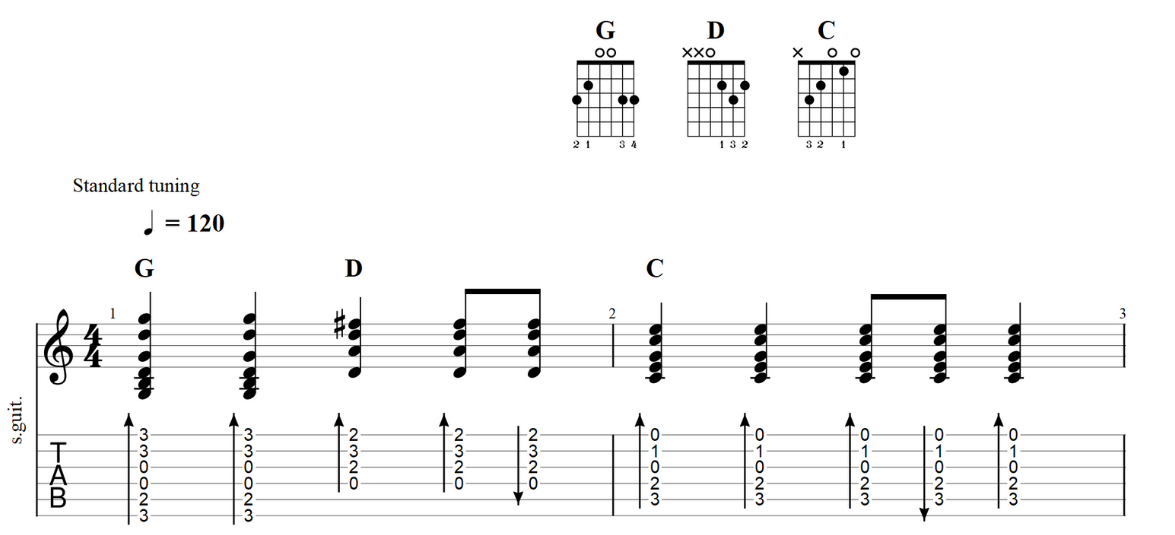Creative Rhythm Guitar Part 1
How to play varied and unique accompaniment
Although lead guitarists seem to have most of the fun (not many people strum a chord progression behind their head!), rhythm guitar playing actually offers a huge amount of opportunities for creativity.
It’s rare that a song’s chord progression and strumming pattern need to be followed strictly. They often benefit from some tasteful variations and ‘added touches’ which allow you to put your own unique take on a song. Below are some step-by-step exercises to help you explore your options with a chord progression. The chords are simple (G, D and C) so that you can focus on the strumming, picking and rhythm approaches. Enjoy and please add your own ideas too!
Exercise no.1

Exercise no.1 introduces the chords and a basic strumming pattern. Familiarise yourself with this before moving on to the variations.
Listen here:
Exercise no.2
Exercise no.2 doesn’t change any of the rhythms but does introduce a Country-style approach of starting each chord with it’s root note (eg. the first note picked in bar 1 is is ‘G’). This is a good first step for moving beyond strumming a full chord all the time. It also adds variety, and by starting with root notes we put emphasis on the movement of chords – G to D to C.
Exercise no.3

Exercise no.3 continues the Country-style approach (which by the way, is a great approach in virtually all genres, not just country!) but makes one further change. This time, rather than strumming the full G and C chords after their root notes, we strum just part of the chord instead.
This more selective approach creates the sound of two distinct parts – a bassline (root notes) and chords (but only in the higher pitches). By creating a clear separation in these parts you start to sound more like a ‘one-man-band’. This is an effective way to create a more nuanced and varied rhythm accompaniment. Let the bass notes keep ringing if you want to keep the progression flowing and sounding smooth.
Exercise no.4
Now we’re building on the previous example by adding something that might seem strange at first…
A kind of unwritten rule with rhythm guitar is that you can strum open strings just before a chord change (usually with an up-strum). This is very helpful for ‘buying you some time’ when making quick chord changes and it also sounds natural once you’re used to it.
You can use this trick as a stylistic effect or to help you play fast strumming patterns between chords.
Exercise no.5
Here, we’ve added a 2nd note after each root to develop our bassline further. This increase the ‘one-man-band’ feel by further separating bass from chords. You can experiment with which notes you choose and notice how that adds emphasis to the harmony in different ways.
For example, in the final bar we play the root and then the Maj 3rd of the C chord. Because the 3rd is the defining interval in a basic chord (the one that makes it either Major or minor), emphasising it like this creates a strongly Major sounding bassline.
These 5 exercises should hopefully help you to see chord progressions and rhythm guitar playing in a less rigid and more creative way.
Look out for part 2. of Creative Rhythm Guitar coming soon!
For more ideas on developing creative guitar parts, check out my improvisation and composing E-courses here: TomHuntMusicTuition | Teachers Pay Teachers
(c) 2025 www.tomhunt.co.uk – Friendly and experienced music tutor based near Ipswich, Suffolk UK



